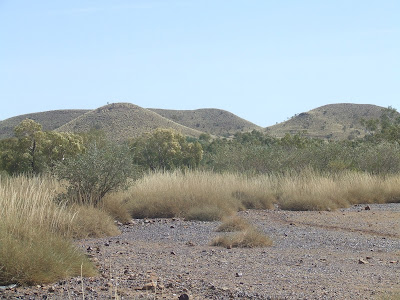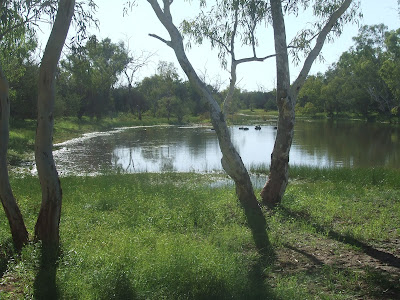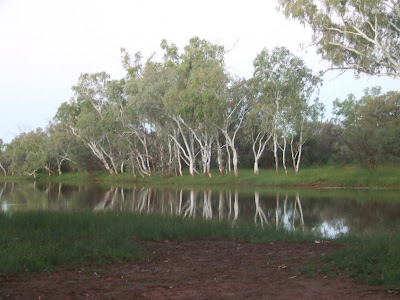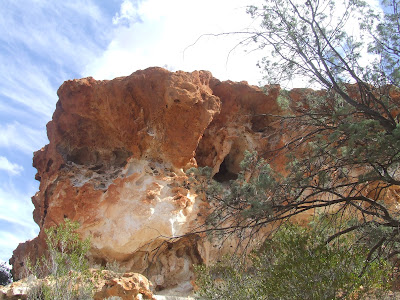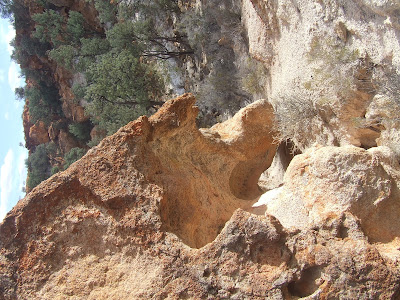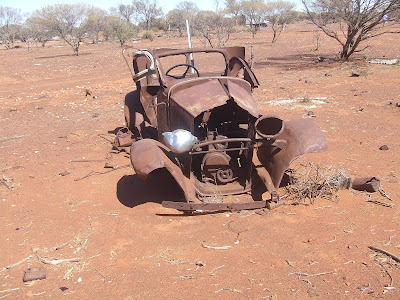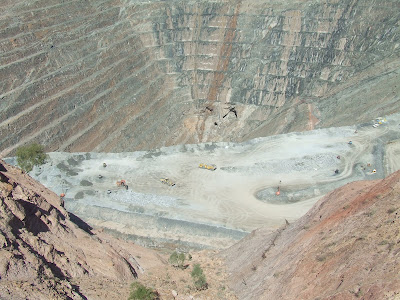Leaving Nullagine, we continued on toward Marble Bar, another small outpost, with the unenviable catchline as the hottest town in Australia. A sign on the road into town proclaims, “a warm welcome from the hottest town in Australia.” Temps can reach 50 degrees for long stretches of time in the midst of summer. Thankfully it was not that hot as winter had just started.
Staying for just a look about, and a short detour to the famous Marble Bar in the creek outside town, which the town was named after. The marble is infact Jasper, mistaken for marble when first discovered, but the name of the town stuck.
Fueling up and topping up water, we indulged in a burger and chips from the roadhouse then took off.
The main road out goes to Port Headland, but a smaller track, called The Boreline Road heads further north and comes out on the main hiway between roadhouses. This was more our style of road, so without really knowing what the road would be like, off we went. Could always turn back if it was unpassable.
The road was good, as far as little used, outback gravel roads go. About 45k or so we came to a concrete causeway crossing on the DeGray River. A wide gravely river bed, with a trickle of water flowing over the causeway in the middle. On the other side, a track wound it’s way along the bank, sensing a camp, we investigated. Quite a way down, the water widened out and a clear spot, complete with a fire pit and firewood appeared. This would do nicely.
After setting up, I explored the surrounds, as I always do. The water was cool and clear, slowly running toward the crossing. Being a hot day, I succumbed to the temptation and stripped off and plunged in. cold at first but becoming nice and refreshing. I knew Din wouldn’t be persuaded to enter the water so I enjoyed it on my own. We were soon to enter crock country a bit further north and so this would probably be the last chance for a dip in a natural pool.
Taking advantage of the water and firewood we hung about for a couple of days and bathed and filled up our washing water.
On the last night it rained a little and the morning broke with overcast sky and the threat of more rain, so it was decided it was time to move.
Further up the road rain did appear, not heavy but keeping the day cool. A few soft patches on the road came up and further up a sheet of water covered the road completely. A 4x4 towing a caravan had stopped at the waters edge, he had overtaken us a few ks back. We pulled alongside and he said “what you think?” “I’ll go for a walk” I said.
The water was only out 200mm deep to about half way across and the surface of the road was solid, so we decided it would be OK. He jumped into the car and slowly headed off. I waited and watched his progress, on the other end the water got deeper but no problem. We followed.
Din had had a chat with the woman in the passengers seat while I was walking the water and she said she wasn’t happy they had taken this god forsaken road. Some people just can’t see the beauty around them. We love these roads.
Further up, another large body of water covered the road, which had turned to clay instead of gravel as it had been. Tracks up on the sloping edge told of others who had passed before, we both followed the tyre tracks on the thin, drier edge and made it across. This was to be the worst of the obstacles and we made it to the main HI way later that day.








